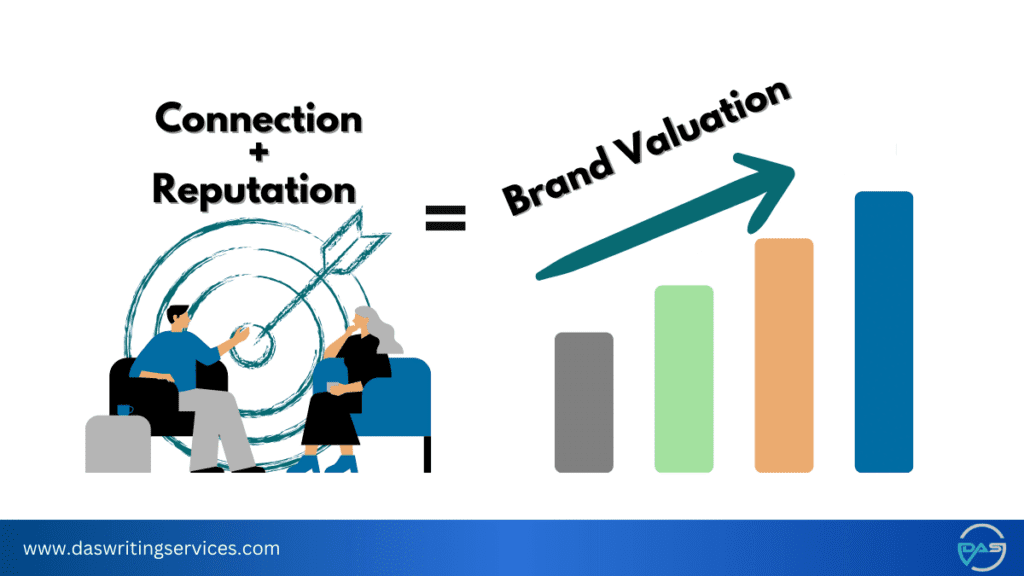Have you ever wondered why you chose one brand over another? That is the power of brand marketing! It is more than just advertising; it is about creating a lasting connection with your customers. This guide dives deep into the world of brand marketing, exploring its essential elements, effective strategies, and how to leverage the digital age for brand success.
We will explore how to build brand awareness, establish loyalty, and craft a cohesive strategy that positions your brand for long-term growth. So, buckle up and get ready to unlock the potential of your brand!
Definition of Brand Marketing

Brand marketing is a strategy aimed at establishing a long-term relationship between a brand and its consumers, ultimately increasing its value. This involves promoting the brand as a whole instead of focusing on individual products or services, and using these offerings to reinforce the brand’s promise.
The objective is to create a distinct and relatable identity for the company that resonates with the target audience, while also fostering trust and loyalty among customers.
Importance of Brand Marketing

Brand marketing plays a crucial role in the success of a business. Here are some of the reasons why Brand Marketing is important:
1. Influencing Purchasing Decisions
A strong brand can significantly influence a customer’s purchasing decision. Effective brand marketing helps establish trust, credibility, and an emotional connection with the target audience. Customers are more likely to choose a brand they recognise and associate with positive values and experiences.
2. Create an Identity for Your Business
Brand marketing is essential for creating a unique identity for your business. It defines your brand’s personality, values, and positioning in the market. A well-crafted brand identity differentiates your business from competitors and makes it recognisable to customers.
3. Helps Customers Remember Your Business
Brand marketing strategies aim to create memorable experiences and associations with your brand. Through consistent digital branding across all touchpoints (logo, colour schemes, messaging, etc.), customers are more likely to recall your business when making purchasing decisions.
4. Boosts Advertising and Marketing
A strong brand foundation enhances the effectiveness of advertising and marketing efforts. Customers are more receptive to marketing messages from brands they recognise and trust. Brand marketing also helps reinforce the brand’s messaging and ensures consistency across all marketing channels.
5. Builds Employee Support
Brand marketing not only targets external customers but also plays a vital role in building employee support and engagement. When employees understand and embrace the brand’s values and mission, they become brand ambassadors, which can contribute to improved customer experiences and overall business success.
Key Elements of a Strong Brand Identity
A strong brand identity helps customers understand, identify, and remember a brand. Some key elements of a strong brand identity include:
1. Logo
A logo is often the first visual representation of a brand that customers encounter. A well-designed logo should be simple, memorable, and effectively communicate the brand’s essence. It should be versatile enough to work across various mediums and applications.
2. Typography
The choice of typography can significantly impact how a brand is perceived. Different typefaces evoke different emotions and convey specific brand personalities, whether it is modern, traditional, playful, or sophisticated.
3. Colour Scheme
Colours play a crucial role in brand recognition and can influence consumer emotions and perceptions. A well-chosen colour palette should align with the brand’s personality and values, and consistently be used across all brand touch points.
4. Brand Voice
Developing a distinct brand voice ensures consistency in communication across all channels. It encompasses the tone, language, and personality that the brand uses to connect with its target audience.
5. Brand Values
Strong brand values serve as the foundation for a brand’s identity and guide its actions and decisions. They shape the brand’s purpose, mission, and positioning, and can foster customer loyalty and employee engagement.
6. Imagery
Visuals, including photography and videography, are powerful tools for storytelling and creating emotional connections with customers. Consistent and high-quality imagery that aligns with the brand’s identity can reinforce brand recognition and memorability.
7. Voice and Tone
The voice and tone of a brand should be consistent across all communication channels, including advertising, social media, customer service, and internal communications. Aligning the voice and tone with the brand’s personality and values helps build trust and strengthen customer relationships.
Building Brand Awareness and Recognition

Brand awareness and recognition are crucial for the success of any business, as they help establish a strong presence in the market and build long-lasting relationships with customers. Here are some key points to consider:
Developing Effective Brand Marketing Strategies
Effective brand marketing strategies are crucial for customer recognition and identification with a company. Learn these Steps to Building the Perfect Brand Marketing Strategy From Scratch:
- Define your target audience: Identify your target customers, their preferences, behaviours, and where they spend their time (online or offline).
- Establish a consistent brand identity: Develop a cohesive brand identity, including a memorable logo, colour scheme, typography, and messaging that aligns with your brand values and personality.
- Utilise multiple channels: Implement a multi-channel marketing approach, leveraging various platforms such as social media, content marketing, influencer marketing, advertising, and events to reach your target audience effectively.
- Engage your audience: Create engaging and shareable content that resonates with your audience, encourages interaction, and fosters a sense of community around your brand.
- Leverage influencers and brand ambassadors: Partner with influencers or appointed brand ambassadors to help amplify your brand’s message and reach new audiences.
- The Role of Brand Equity in Marketing
Brand equity refers to the value and perception that customers associate with a brand. It encompasses factors such as brand awareness, brand loyalty, perceived quality, and brand associations. Building strong brand equity can:
- Enhance customer loyalty and advocacy, leading to repeat purchases and positive word-of-mouth.
- Allow for premium pricing, as customers are willing to pay more for a trusted and valued brand.
- Facilitate brand extensions and new product launches, as customers are more likely to trust and try new offerings from a brand they recognise and respect.
- Increase marketing effectiveness and efficiency, as customers are more receptive to marketing efforts from a familiar and trusted brand.
Strategies for a Successful Brand Marketing Campaign
A successful brand marketing campaign can include many strategies, such as:
- Set Clear Objectives: Define measurable goals for your brand marketing campaign, such as increasing brand awareness, driving website traffic, or boosting sales.
- Develop a Compelling Brand Story: Craft a narrative that resonates with your target audience and highlights your brand’s unique value proposition, values, and personality.
- Integrate Your Brand Across All Touch Points: Ensure consistent brand messaging, visuals, and experiences across all customer touch points, including your website, social media, advertising, packaging, and customer service.
- Leverage Data and Analytics: Continuously measure and analyse the performance of your brand marketing campaigns, using metrics such as website traffic, social media engagement, brand mentions, and sales data.
- Adapt and Optimise: Based on the data and feedback gathered, be willing to adjust your strategies and refine your approach to ensure maximum impact and effectiveness.
Setting Goals and Objectives for Brand Marketing
Establishing clear goals and objectives is crucial for the success of any brand marketing strategy. Here are some key considerations for each of the points you have mentioned:
Establishing Brand Loyalty Among Consumers
Here are some strategies to build brand loyalty among consumers:
- Define what brand loyalty means for your business (e.g., repeat purchases, positive word-of-mouth, customer advocacy).
- Set specific targets for customer retention rates, customer lifetime value, and net promoter scores.
- Develop strategies to consistently deliver exceptional customer experiences across all touch points.
- Implement loyalty programs, personalised marketing campaigns, and community-building initiatives to foster deeper connections with customers.
- Continuously gather feedback and insights from customers to improve and adapt your loyalty strategies.
Creating a Cohesive Brand Strategy for Long-term Success
Having a cohesive brand strategy is more significant than just the feel and look. The important thing here is what kind of impression your brand creates when people engage with your brand. Here are some of the ways in which you can create a cohesive brand strategy for long-term success:
- Conduct a thorough brand audit to assess your current brand positioning, strengths, weaknesses, and opportunities.
- Define your brand’s core values, personality, and unique value proposition.
- Develop a consistent brand identity and guidelines for visual elements, messaging, and tone of voice.
- Ensure alignment between your brand strategy and overall business objectives, such as target markets, product offerings, and growth plans.
- Establish processes for monitoring and adapting your brand strategy as market conditions or business priorities evolve.
Utilising Content Marketing and Brand Messaging Effectively
Following are some of the essential ways you can utilise content marketing and brand messaging effectively:
- Define your content marketing goals (e.g., lead generation, brand awareness, thought leadership, customer education).
- Develop a content strategy that aligns with your brand’s values, tone, and target audience preferences.
- Create a content calendar and plan for various content formats (e.g., website blog posts, videos, infographics, and social media posts).
- Ensure consistent and compelling brand messaging across all content and communication channels.
- Measure and analyse content performance metrics (e.g., engagement, shares, conversions) to refine and optimise your content marketing efforts.
Embracing Digital Trends in Brand Marketing
Brands need to adapt and leverage the power of digital marketing channels to remain relevant and connect with their target audience effectively. Here are some key considerations for embracing digital trends in brand marketing:
Adapting to the Shift Towards Digital Marketing Channels

As consumers shift their preferences to digital channels, businesses need to adapt their marketing strategies to engage with their target audiences across devices, media channels, and purchase channels. Here are some tips for adapting to the shift towards digital marketing channels:
- Conduct a comprehensive analysis of your target audience’s digital behaviour, including the platforms they frequent, the content they engage with, and the devices they use.
- Develop a robust digital marketing strategy encompassing various channels such as search engine optimisation (SEO), pay-per-click (PPC) advertising, email marketing, and content marketing.
- Optimise your website and digital assets for a seamless user experience across different devices and screen contents.
- Leverage data analytics and insights to continuously refine and personalise your digital marketing efforts for maximum impact.
- Foster a data-driven and agile marketing culture within your organisation to quickly adapt to emerging digital trends and consumer behaviours.
Incorporating Product Marketing into Your Brand Strategy
Following are some of the most important strategies you can incorporate into your brand strategy:
- Ensure alignment between your product marketing and overall brand positioning, values, and messaging.
- Develop compelling product stories and narratives that resonate with your target audience’s needs and desires.
- Utilise various digital channels (e.g., product websites, online demos, video tutorials) to showcase your products and highlight their unique features and benefits.
- Leverage user-generated content (UGC) and customer reviews to build trust and credibility around your products.
- Continuously gather feedback and insights from customers to improve and enhance your product offerings and marketing strategies.
Utilising Social Media for Enhanced Brand Recognition
Social media can increase brand awareness by helping brands reach more people, engage with their audience, and build their online visibility. Here are some ways brands can use social media to increase brand awareness:
- Identify the social media platforms where your target audience is most active and engaged.
- Develop a social media content strategy that aligns with your brand’s personality, tone, and messaging.
- Encourage user-generated content and social media interactions through campaigns, contests, and engaging with your audience.
- Leverage influencer marketing and strategic partnerships to amplify your brand’s reach and credibility on social media.
- Monitor and analyse social media metrics (e.g., engagement, mentions, sentiment) to optimise your social media presence and strategies.
Measuring Success and Refining Your Brand Marketing Strategy
Measuring the success of your brand marketing efforts and continuously refining your strategy is crucial for long-term brand growth and relevance. Here are some key considerations for each of the points you mentioned:
Key Performance Indicators for Evaluating Brand Marketing Efforts

Key Performance Indicators (KPIs) are essential metrics that help marketers evaluate the effectiveness of their marketing campaigns. They can also help marketers monitor progress towards their goals and make data-driven decisions. Here are some KPIs that can be used to evaluate brand marketing efforts:
- Brand Awareness: Track metrics such as website traffic, social media mentions, search engine rankings, and brand recall surveys to measure how recognisable your brand is among your target audience.
- Brand Engagement: Analyse engagement metrics like social media interactions, email open rates, content shares, and event attendance to gauge how effectively your brand is resonating with and engaging your audience.
- Brand Loyalty: Monitor customer retention rates, repeat purchase behaviour, customer lifetime value, and net promoter scores to evaluate the level of loyalty and advocacy among your customer base.
- Brand Equity: Conduct brand equity studies to assess the perceived value, quality, and association’s customers attribute to your brand compared to competitors.
- Return on Marketing Investment (ROMI): Calculate the overall return on investment (ROI) for your brand marketing efforts by tracking metrics like lead generation, conversions, and revenue directly attributable to your marketing campaigns.
- Website Traffic: This metric provides insights into a business’s online presence and can help identify areas for improvement.
- Social Listening Metrics: Social listening allows a brand to analyse and respond to what others say about its products or services on social media platforms.
- Social Media Engagement: Engagement is any action on the part of a client or potential customer that results in a positive outcome for the brand. It is a significant indicator of how effective a marketing campaign is because it considers how users have perceived and used the content.
Identifying Areas for Improvement in Your Brand Strategy
Following are some of the most important ways you can identify areas for improvement in your brand strategy:
- Conduct regular brand audits to identify your current brand strategy’s strengths, weaknesses, opportunities, and threats (SWOT analysis).
- Gather feedback from customers, employees, and industry experts to gain valuable insights into areas where your brand may be falling short or could improve.
- Analyse competitor strategies and market trends to identify gaps or opportunities that your brand could capitalise on.
- Review your brand messaging, visual identity, and overall brand experience to ensure consistency and alignment with your target audience’s evolving needs and preferences.
- Identify bottlenecks or inefficiencies in your marketing processes, resource allocation, or technology infrastructure that may be hindering your brand’s success.
Consistent Brand Monitoring and Adaptation to Market Changes
Here are some of the results that consistent brand monitoring and adaptation to market changes can offer:
- Establish a robust brand monitoring system to track mentions, sentiment, and conversations about your brand across various online and offline channels.
- Stay up-to-date with industry trends, consumer behaviour shifts, and emerging technologies that could impact your brand’s relevance or marketing strategies.
- Be agile and willing to adapt your brand messaging, positioning, and marketing tactics in response to changing market conditions, customer preferences, or competitive landscape.
- Foster a culture of continuous learning and experimentation within your organisation, encouraging innovation and iteration in your brand marketing efforts.
- Regularly review and adjust your brand marketing goals, strategies, and resource allocation based on performance data and market insights to ensure optimal impact and ROI.
Conclusion
Brand marketing is a vital ingredient for business success in today’s highly competitive landscape. It goes beyond just promoting products or services – it is about crafting a distinct identity, fostering emotional connections, and building lasting relationships with consumers.
Effective brand marketing involves developing a cohesive strategy that aligns your brand’s core values, personality, and unique value proposition across all touch points. It requires a deep understanding of your target audience, their needs, and the channels they use with brands.
Frequently Asked Questions
1. What defines effective brand marketing?
Effective brand marketing is creating strong brand awareness, establishing an emotional connection with the target audience, and communicating a clear and consistent brand identity across all touch points.
It goes beyond just promoting products or services; it involves crafting a compelling brand story, personality, and set of values that resonate with consumers on a deeper level.
2. What is brand equity, and why is it important?
Brand equity refers to consumers’ perceived value and associations with a brand. It encompasses factors such as brand awareness, brand loyalty, perceived quality, and brand associations.
Strong brand equity is crucial because it can lead to increased customer loyalty, the ability to command premium pricing, facilitated brand extensions, and enhanced marketing effectiveness.
3. What are the key factors that contribute to a brand’s success?
Successful brands typically share these key factors:
- Unique and Differentiating Brand Identity: A clear and distinct brand personality, values, and positioning that sets them apart from competitors.
- Consistent Brand Experience: Delivering a seamless and cohesive brand experience across all customer touch points, both online and offline.
- Emotional Connection: Fostering an emotional bond with their target audience through compelling storytelling, relatable values, and authenticity.
- Brand Relevance: Continuously adapting and evolving to remain relevant and aligned with changing consumer needs and market trends.
- Customer Loyalty and Advocacy: Building a loyal customer base that actively promotes and recommends the brand to others.
4. How can brand marketing influence consumer behaviour and perceptions?
Brand marketing can have profound psychological effects on consumers. Effective branding can reinforce self-identity, evoke positive emotions, and create a sense of belonging or aspiration.
Strong brands have the power to shape consumer perceptions, influence purchasing decisions, and foster brand loyalty and advocacy. Positive brand experiences can create a self-perpetuating cycle of better brand performance, increased consumer satisfaction, and enhanced brand equity.
5. What is a brand vision, and why is it important?
A brand vision is a long-term, aspirational statement that defines the purpose, values, and desired future state of a brand. It serves as a guiding principle for the brand’s strategic direction, decision-making, and overall identity. A well-defined brand vision is essential because it:
- Provides a clear sense of purpose and direction for the brand
- Aligns the brand’s actions and initiatives with its core values and aspirations
- Fosters a strong brand culture and employee engagement
- Communicates the brand’s long-term aspirations to stakeholders, including customers and partners
- Helps maintain brand consistency and relevance as the market evolves
6. How can brands effectively leverage social media in their marketing strategies?
Social media has become an indispensable tool for brand marketing. Brands can effectively leverage social media by:
- Identifying the platforms where their target audience is most active and engaged
- Creating shareable, engaging, and visually appealing content that aligns with their brand personality and messaging
- Encouraging user-generated content and fostering a sense of community around the brand
- Leveraging influencer marketing and strategic partnerships to amplify reach and credibility
- Monitoring social media conversations, sentiment, and analytics to optimise their strategies and respond promptly to customer feedback or concerns.
By integrating social media into their overall brand marketing strategy, brands can enhance brand awareness, build lasting relationships with their audience, and stay ahead of emerging trends and consumer behaviours.

Achinta Maity, a former professional SEO content writer for Das Writing Services, is currently working as an SEO Analyst. During his long tenure as a writer, he has worked for multiple clients from various industries, including finance and digital marketing. Due to his passion for writing and sharing knowledge, he contributes to our blog besides working as an SEO Analyst. For any queries, you can contact him on his LinkedIn profile.






Leave a comment